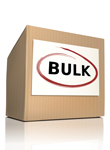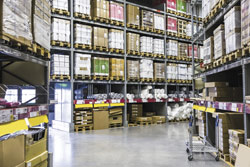By Eric Moriarty
 Relaxed customer return policies by major retailers and manufacturers increase customer loyalty but they also drive up the amount of merchandise that is sent back. When you consider that over $260 billion worth of merchandise is returned each year – a lot of which cannot go back on the shelves – that is a huge amount of inventory lying idle. But one company’s headache is another’s opportunity, and for smaller, independent retailers, there has never been a better time to source returned and excess merchandise on the secondary market.
Relaxed customer return policies by major retailers and manufacturers increase customer loyalty but they also drive up the amount of merchandise that is sent back. When you consider that over $260 billion worth of merchandise is returned each year – a lot of which cannot go back on the shelves – that is a huge amount of inventory lying idle. But one company’s headache is another’s opportunity, and for smaller, independent retailers, there has never been a better time to source returned and excess merchandise on the secondary market.
So, as a buyer, how do you navigate the secondary market to successfully sift through the bad and the ugly to get to the good? Here are some tips on what to look out for when sourcing customer returns and excess merchandise:
It is best to buy directly from the source
By purchasing directly from the retailer or manufacturer you can assume that there is no middleman involvement and no price mark up. Historically, it has been difficult for small to medium sized buyers to buy excess inventory directly from large retailers and manufacturers; however, today there are new, efficient systems that automate the manual work otherwise required for them to sell to larger buyer groups. One such tool is an online auction marketplace platform. These marketplaces provide a level playing field for all buyers to compete for the inventory, and they enable a direct relationship with the source via a transparent platform. Because they eliminate all negotiation over price, it is just as easy to have thousands of buyers involved as it is to manually sell to just a handful.
Keep in mind that purchasing via a traditional liquidator can involve layers of middlemen, product poaching and price mark ups before buyers even have access to the inventory.
Source online from reputable sellers
 Buyers can often source inventory more affordably and efficiently by tapping into online auction marketplaces that sell returned and excess merchandise. There are numerous benefits to sourcing this type of product online including: greater product availability, detailed product descriptions, bulk quantities at your fingertips, shipping options, and a quick sales cycle. The key is to make sure you are buying from a known brand, or use a site that has a seller rating system, so you know you are buying from a reputable seller.
Buyers can often source inventory more affordably and efficiently by tapping into online auction marketplaces that sell returned and excess merchandise. There are numerous benefits to sourcing this type of product online including: greater product availability, detailed product descriptions, bulk quantities at your fingertips, shipping options, and a quick sales cycle. The key is to make sure you are buying from a known brand, or use a site that has a seller rating system, so you know you are buying from a reputable seller.
Purchasing through these online auction marketplaces can be a great, cost-effective way to secure inventory because you will see what others are bidding and never pay more than you want.
Understand what you are purchasing
It always pays to be detail oriented, especially when sourcing on the secondary market. Ideally, buyers will be able to view a full manifest of the inventory, but that is not always available. The key is to make sure you have as much available detail on the products as possible before you buy, including a thorough description, actual images of the inventory, shipping dimensions and costs, condition codes and technical information, if applicable.
Know your condition codes
Products sold on the secondary market can range from brand new in box to salvage condition. Because this merchandise is typically sold “as is,” be sure to familiarize yourself with each condition category, keeping in mind that different sellers may categorize the inventory differently. With customer return lots, this is especially important. Make sure you know as much as possible about the condition of each item in the lot, and when that information is not available, bid accordingly.
 Make sure you have access to a constant supply of product
Make sure you have access to a constant supply of product
It is important to have enough products to satisfy the needs of your customers. Make sure that you are continuously increasing your sources of inventory. Oftentimes the best way to do this is by purchasing through an online marketplace that has a constant, dependable flow of inventory and one that is regularly adding new retailers and manufacturers. By purchasing through these online auction marketplaces, you are guaranteed to continuously increase your breadth and depth of supply to keep your customers happy.
Understand the Terms of Purchase
Do your research. Know exactly what you are buying and from whom you are buying, and what their specific policies are. A credible seller will provide thorough product descriptions, images, accurate condition codes, quality customer service, and most importantly, visibility into what the terms of purchase are.
If you have historically relied on local wholesale outlets or tradeshows to purchase goods, consider expanding your sourcing online; specifically, by leveraging trusted online marketplaces that sell returned and excess merchandise. By applying the aforementioned secondary market know-how, securing this type of inventory can be an efficient and affordable product source.
 Eric Moriarty is Vice President of Sales for B-Stock Solutions, a technology provider powering the largest network of B2B liquidation marketplaces. More information about the company can be found at
Eric Moriarty is Vice President of Sales for B-Stock Solutions, a technology provider powering the largest network of B2B liquidation marketplaces. More information about the company can be found at